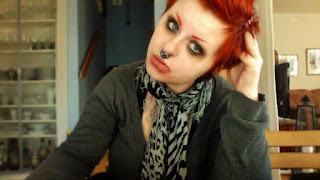Laura's Story
Thought of the Month: Good trees bear good fruit. Don't worry about the “fruits of your labor,” money, success, other material things, or even a cure for AVM. Let’s just be committed to rolling our sleeves up and doing the work. Just do the work and keep persevering. As Laura Clement’s story us, we will reap the dedication we sow…
Hometown: Bagshot, Surrey
When I was younger, I wanted to be: A hairdresser
In 10 years, I will have: a happy retirement
My life long goal is to: to have my children's book published
If I could change one thing about the world, I would: make everyone nice
My favorite quote/scripture/affirmation statement is: Don't judge a book by its cover
1) Describe the type of AVM you have? What was the first sign?
A high flow AVM in my right hand at 8 yrs old after horse riding, holding the reigns. It was very painful.
2) How did you eventually come to receive treatment?
The doctor sent me to Hammersmith Hospital to see vascular surgeon Ms. Mansfield.
3) Who are/were your main doctors, where are/were you treated and how has your care been?
Ms. Mansfield did my first operation when I was 9yrs old. At 17, I had my little finger amputated as it bled continuously had continuous care when I had my two children at 40 (AVM get worse through pregnancy). I had a bleed. Dr. Yakes was over from America and said he could help. He did 4 operations over a few years. Now I have Professor Hamilton’s team with Dr. Brooks at Royal Free London. Everyone I have had has been amazing.
4) How do you feel your health will progress in the future?
My last operation went wrong, so I now have half a hand. The AVM is still active, so probably more operations.
5) How has having an AVM changed or impacted your life?
Living with an AVM not knowing what it will do next makes you live every day as if it's your last.
6) What has been your biggest challenge in the battle with AVM?
My last op coming to terms with half a hand (still now recovering)
7) What do you think a documentary about those surviving AVM can achieve?
Would be brilliant awareness, and a cure is essential. I would be happy to be part of it. Having lived 50 years with one, everyday I am reminded of it.
8) What are your hopes for the future of AVM research?
For a cure to help others.
9) What has been the biggest lesson you've learned throughout your journey thus far?
Never ever judge anyone who is going through a hard time, help them through a hard time.
10) What is your proudest accomplishment?
I looked after a boy called Thomas. I was his one to one. He saw Nikki on Pride of Britain, so [he saw something] visual, and he was then able to understand what I had. He is doing a bike ride 400 km in Wales in June [called[ Chase the Dragon. I am giving him a huge send off at my school in Ascot, so I need a famous band. Arranging other bits [as well]. Got a free bike for Thomas from a sponsor! Nikki is going to come to send off, so I want to thank her for everything she has done for AVM awareness. I want this to be huge and make lots of money for AVM research.
If you would like to donate to the fundraiser, click HERE.






